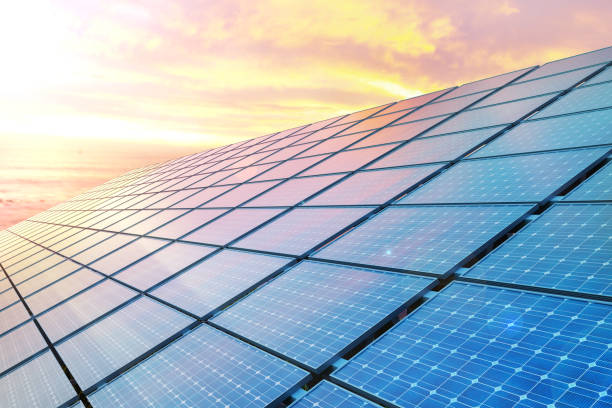As solar energy continues to power millions of homes around the world, the importance of solar energy storage systems has never been greater. In 2025, more homeowners are pairing their solar panels with advanced storage solutions from Solar Waco to achieve true energy independence. Why? Because storing excess solar power ensures you have access to electricity at night, during cloudy days, or when the grid goes down.
By combining solar panels with Solar Waco’s advanced solar battery storage systems, homeowners can maximize their investment and reduce their reliance on utility companies. Whether you’re new to solar energy or looking to upgrade your current setup, this guide by Solar Waco will explain everything you need to know about solar energy storage systems—their benefits, how they work, costs, and more.
What Are Solar Energy Storage Systems?
Solar energy storage systems allow homeowners to store excess electricity generated by their solar panels for later use. Instead of sending unused energy back to the grid through net metering, the electricity is stored in specialized batteries like Tesla Powerwall, LG Chem, or Enphase IQ Battery.
These batteries store direct current (DC) electricity produced by solar panels. An inverter then converts it to alternating current (AC), which powers your home’s appliances. The key advantage? You can use your own stored solar energy at night, during peak rate hours, or in case of power outages.
By adding storage to your solar panel system, you’re no longer dependent on unpredictable energy prices or vulnerable grid infrastructure. You gain total control over when and how you use your energy.
How Do Solar Batteries Work?
The way solar energy storage systems work is relatively straightforward. During the day, when sunlight is abundant, your solar panels often produce more electricity than your home consumes. Without a battery, that excess energy would be sent to the local power grid, possibly earning you credits through net metering.
However, with solar batteries, that extra electricity is stored in your battery system instead of going back to the grid. Your home will first use the electricity generated by your panels. Once the sun sets or your panels stop producing power, your home automatically draws electricity from the battery before pulling power from the grid.
Advanced solar battery systems also allow for smart energy management, meaning they can prioritize battery usage based on energy prices, weather forecasts, or your consumption habits—helping you save even more money.
Benefits of Using Solar Energy Storage Systems
There are several significant benefits to integrating solar energy storage systems into your home. The biggest advantage is energy independence. With stored solar energy, you’re less vulnerable to blackouts, utility rate hikes, and fuel shortages. Your home becomes self-reliant, especially if paired with multiple batteries for extended backup.
Another key benefit is financial. Many regions experience time-of-use (TOU) electricity pricing, where energy costs more during peak hours. Solar batteries allow you to avoid these high rates by using stored energy during expensive periods.
Environmentally, solar energy storage maximizes your home’s use of renewable energy. By relying more on stored solar power, you reduce dependence on fossil fuels, lowering your carbon footprint and supporting global sustainability efforts.
Cost of Solar Energy Storage Systems in 2025
While solar battery systems add significant value, they do come with an upfront investment. As of 2025, the average cost for a home battery system is between $8,000 and $15,000 per battery, depending on size and brand. Most homes require 1-2 batteries, depending on energy usage and desired backup capacity.
The good news is that federal incentives like the Investment Tax Credit (ITC) cover 30% of battery costs when installed with solar panels. Some local utilities also offer rebates or financing programs, further reducing your upfront expenses.
Over time, the savings from avoiding peak rates, reducing grid dependence, and selling excess power can help pay off the system, typically within 7 to 10 years for most households. Plus, battery prices continue to fall as technology advances.
Choosing the Right Solar Battery for Your Needs
When selecting a solar energy storage system, you need to consider capacity, power output, warranty, and brand reputation. Battery capacity (measured in kilowatt-hours, kWh) determines how much electricity the battery can store, while power output (measured in kilowatts, kW) determines how much energy it can supply at one time.
Popular choices like Tesla Powerwall and LG Chem offer high capacities suitable for typical household needs. Additionally, many come with 10- to 15-year warranties, ensuring long-term reliability.
It’s also essential to work with a certified solar installer who can evaluate your home’s energy use and recommend the right combination of panels and batteries to optimize savings and performance.
FAQs About Solar Energy Storage Systems
1. Can I add a solar battery to an existing solar panel system?
Yes, most existing solar panel setups can be retrofitted with a solar energy storage system. Consult with your installer to ensure compatibility.
2. How long will a fully charged solar battery last?
A fully charged solar battery can typically power essential home appliances for 8 to 12 hours, depending on the system size and household energy use.
3. Are solar batteries maintenance-free?
Most modern solar batteries are low-maintenance. Occasional software updates or inspections may be recommended by your installer for peak performance.
4. What’s the lifespan of a solar battery?
Most solar batteries have a lifespan of 10 to 15 years, with some brands offering performance warranties that guarantee capacity over that period.
5. Do I still need the grid if I have solar panels and batteries?
While solar energy storage systems reduce grid reliance, many homes remain grid-connected for added flexibility. Some off-grid setups are possible with multiple batteries.
